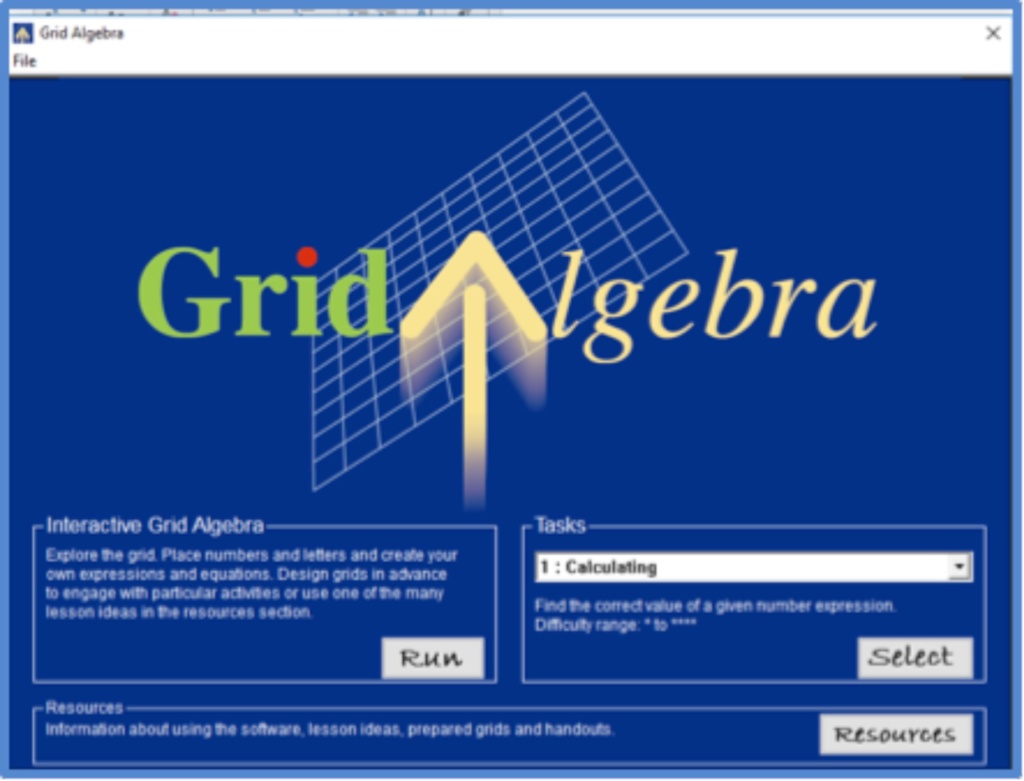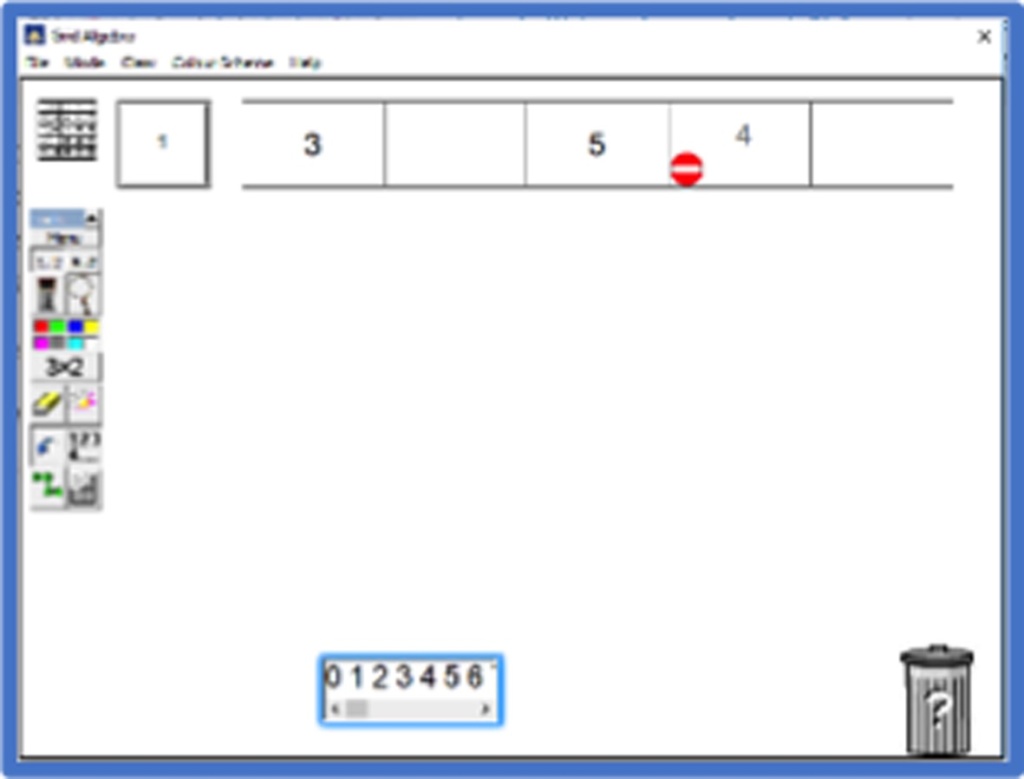
This article describes how I have introduced Grid Algebra (software published by the Association of Teachers of Mathematics) to pupils in Key Stage 1, but I have also used these activities with other age groups, who are not familiar with the software, as an introduction. Although the software is not new and was written for earlier operating systems, it also has full functionality on Windows 10.
I have taught students from pre-school to sixth form and adults looking to achieve Level 1 or Level 2 qualifications and have run workshops for teachers on the use of digital technologies at mathematics conferences. I believe that digital technologies are a tool to support teaching and learning by providing opportunities for visualisation and interactivity.
To many primary teachers, the concept of algebra being taught to KS1 might suggest ‘hard’ maths. In fact, much of the maths in early years is about finding missing numbers with questions such as ‘What do I add to 7 to make 10?’ When Grid Algebra was first proposed to the ATM committee, the inclusion of ‘Algebra’ in the name sparked a debate of who the software was for, as at the time of development algebra was very much thought of as something for KS3 and upwards in schools. Eventually it was also marketed for KS2, but has also been used successfully in KS1. Although algebra is not formally met at KS1, Grid Algebra helps lay some of the foundations.
One of the problems with learning how to use any piece of software is the temptation for those demonstrating to show too much so there becomes information overload without the chance to consolidate the basics. I have personally used Grid Algebra with all key stages, and beyond into adult education, and found that everyone has responded very positively to it, as the learning is visual and interactive whatever stage their mathematics. Here I do not describe all the features of the software straight away but instead, show how I have used it with a mixed Y1/Y2 class before moving onto other features. I have deliberately not put in curriculum links, leaving it to the reader to think of their own classes and as to where Grid Algebra could enhance learning through interactivity and visualisation. With learners, especially younger children, I do use it with manipulatives. I use individual or paired whiteboards when using it with a group or whole class so that all are engaged in the activity.
Getting started
The front page has three options, Run runs the grid, Tasks has some ‘ready prepared’ activities with a choice of levels and can be used whole class, pairs or individually, Resources includes lesson ideas, and prepared grids for printing. What I like is that it is open content and therefore flexible, it can be used by individuals or teachers and/or pupils and with an interactive screen so I can choose how to use it with my own pupils, particularly when reinforcing concepts.

Learning the grid
In Key Stage 1 I used it to develop a sense of number by encouraging pupils to look for patterns. The simplest interface option is one line with 5 or 24 spaces, which can be used with children learning to count. Numbers are added to the grid by dragging the number from the bar into a space with the initial input any number up to maximum of 50 in the final space, negative numbers are also possible. Any incorrect numbers are dragged to the bin or can be rubbed out using the rubber icon (click it again to switch it off).
